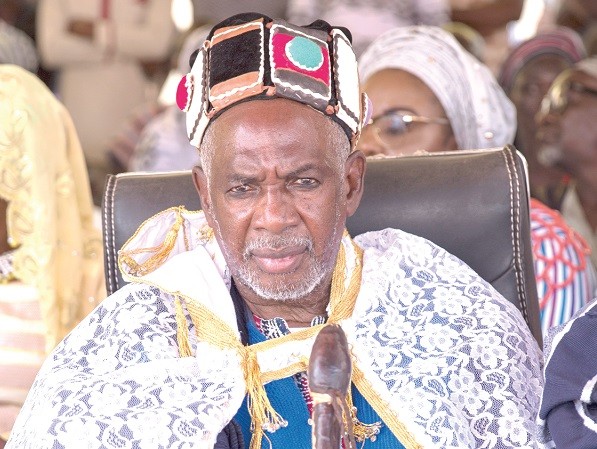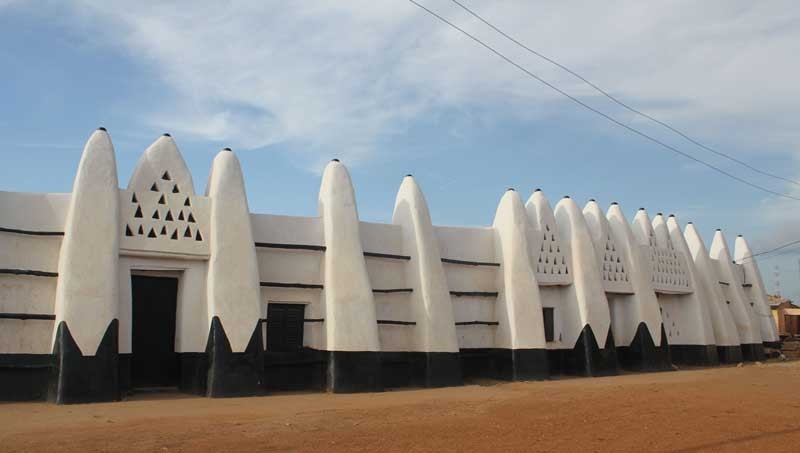Akatekyi Crocodile Pond: A Place...
September 29, 2025
Built in the 19th century, this remarkable palace showcases traditional Sudanese mud-brick architecture and serves as the official residence of the Wa Naa, the paramount chief of the Wala people. With its unique design and historical significance, the palace continues to captivate visitors and holds a vital role in the political, religious, and social life of the local community.
Origins and Significance
The idea to construct the new palace originated when Naa Yamusa Pelpuo III, the then Waa Naa, marvelled at the unique architecture of the Central Mosque at Wa, built by the Limanyiri clan. Impressed by its beauty and significance, he envisioned replacing the old structure, leading to the demolition of the Mole-Dagban round thatched cottage. The new palace, constructed in the Western Sudanese architectural style, became a symbol of the Wala people's identity and heritage.
Cultural Significance and Functions
The Wa Naa Palace serves as the official residential property of the Wa Naa, currently, Naa Fuseini Seidu Pelpuo IV, embodying the soul of the people of Wa. In times of crisis, it acts as a safe haven for the community. Moreover, the palace hosts significant traditional ceremonies, including the Dumba and Jinbenti festivals, as well as the enskinment of new Wa Naas and paramount chiefs. It also serves as the venue for the confirmation of titles of the Regional Chief Imam and the Yeri-Naa, who acts as a liaison officer between the Wa Naa and the Regional Chief Imam.

Political and Cultural Headquarters
The Wa Naa's Palace holds great importance in the politico-cultural arena, serving as the headquarters of the Wala Kingdom. It is where the Tendaana, the chairperson of the kingmakers, convenes meetings and acts as the convener in consultation with other members. The palace is the site where newly enskinned chiefs receive royal blessings and approval, emphasizing its role in maintaining the hierarchy and recognition of traditional leaders.
Architectural Marvel
Constructed in 1889 as a Mole-Dagban round thatched cottage, the palace underwent a transformation under the guidance of Naa Yamusa Pelpuo III. From 1919 to 1920, it was rebuilt in the Western Sudanese architectural style that still stands today. The palace features mud-brick walls, sun-dried mud, and Y-shaped wooden columns supporting a flat roof covered with mud. Its unique frontage showcases buttresses with pinnacles rising above the parapet, and the walls exhibit massive visible Y-shaped structures, designed to protect the royal family from slave dealers' attacks.

Preservation and Legacy
Gazetted as a national monument, the Wa Naa Palace serves as an example of traditional Sudanese mud-brick architecture that has withstood the test of time for over a century. It stands as a historical residence and cultural attraction, drawing visitors to experience the rich traditions of the Wala people. Notably, the forecourt of the palace serves as a final resting place for past Wa Naas, further connecting the present to the legacy of the past.
The Wa Naa Palace stands proudly as an architectural masterpiece and a symbol of tradition and cultural significance for the Wala people. It represents the history, heritage, and identity of the community, hosting vital ceremonies and acting as the seat of power for the Wa Naa. With its unique design and historical value, the palace continues to be a cherished landmark, attracting visitors from far and wide to witness the grandeur of the Wala Kingdom and immerse themselves in the rich cultural tapestry of Ghana's Upper West Region.
September 29, 2025
September 29, 2025
September 26, 2025
September 18, 2025
September 18, 2025
September 4, 2025
September 3, 2025
August 28, 2025
August 19, 2025
August 8, 2025